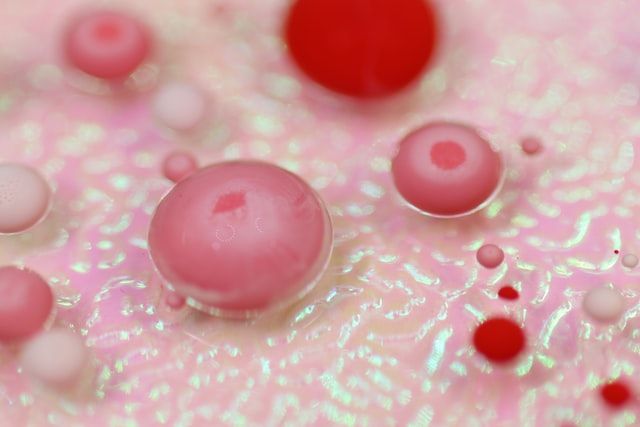An Easy Guide To Understanding What Hemostasis Is
Table of Content

Hemostasis is a natural process that helps to stop bleeding. When you cut yourself, the body works to repair the damage by forming a blood clot. The same goes for any other type of injury that leads to bleeding. This process is known as hemostasis. Without hemostasis, you wouldn't be able to recover from even a small cut. Hemostasis occurs through a series of complex steps that involve both the blood and the walls of blood vessels. Anyone can develop a disorder that interferes with this process, which can lead to serious consequences. It is therefore important to have a basic understanding of how hemostasis works and what can potentially go wrong.
If you're interested in learning more about hemostasis, keep reading. This guide will explain everything you need to know about this important process.
What Are Different Phases Of Hemostasis?
As mentioned earlier, hemostasis is a complex process that involves different phases. It is important to understand each phase to have a clear understanding of how the process works. Here are the different phases of hemostasis:
- The first phase is called vascular constriction. This is when the blood vessels narrow and the flow of blood slows down. This helps to reduce blood loss by decreasing the amount of blood that escapes from a wound.
- The second phase is called platelet plug formation. Platelets are small cells that circulate in the blood and help with clotting. When you have an injury, platelets will collect at the site of the injury and stick together to form a clot. This clot helps to plug the hole in the blood vessel and stop the bleeding.
- The third phase is called the clotting cascade. This is a series of reactions that occur to create a more stable clot. The clotting cascade involves different proteins that work together to create a fibrin mesh. This mesh reinforces the platelet plug and helps to further stop the bleeding.
What Are The Different Types Of Hemostasis Disorders?
Different types of disorders can interfere with the hemostasis process. These disorders can be congenital, meaning that a person is born with them. They can also be acquired, meaning that they develop later in life. Some of the most common types of hemostasis disorders include:
- Hemophilia: This is a congenital disorder that prevents the blood from clotting properly. People with hemophilia have low levels of clotting factors, which are proteins needed for clotting. As a result, they bleed for a longer time than people without the disorder.
- Thrombocytopenia: This is a disorder that results in a low platelet count. Platelets are necessary for clotting, so a low platelet count can lead to difficulty forming clots. This can result in easy bruising and excessive bleeding.
What Is Hemostat, And What Does It Do?
A hemostat is a device that is used to control bleeding. There are different types of hemostats, but they all work to apply pressure to a wound to stop the bleeding. Hemostats are commonly used by medical professionals, but they can also be purchased for use at home.
Those used by medical staff, usually during surgery, are sterile and come in a variety of sizes. They are called Surgicel Hemostat, Hemostat Clamp, or Hemostatic Forceps. The ones that can be bought over-the-counter (OTC) are not sterile, but they can still be used to control bleeding.
How Do You Use Hemostat?
If you ever find yourself in a situation where you need to use a hemostat, it is important to know how to use it correctly. The first step is to identify the type of hemostat that you have. If you are using a medical hemostat, it will likely be sterile. If you are using an OTC hemostat, it will not be sterile.
Once you have identified the type of hemostat, you can proceed with using it. First, clean the wound with soap and water. If the wound is on your arm or leg, elevate the limb above your heart. This will help to reduce blood flow to the wound.
Next, apply pressure to the wound with a clean cloth or gauze pad. Once you have applied pressure, place the hemostat over the cloth or gauze pad. Apply pressure to the hemostat to control the bleeding.
What Are The Complications Of Hemostasis?
While hemostasis is a necessary process that helps to keep us alive, there can be complications. One of the most common complications is excessive bleeding. This can occur if there is an injury to a blood vessel or if there is a disorder that prevents proper clotting. Excessive bleeding can lead to serious health problems and even death.
Another complication of hemostasis is thrombosis. This occurs when a clot forms within a blood vessel, preventing blood from flowing through. Thrombosis can be dangerous because it can lead to a heart attack or stroke. If you are experiencing any symptoms of thrombosis, it is important to seek medical help immediately.
Hemostasis is a vital process that helps to keep us alive and healthy. While there can be complications, understanding the process can help to prevent them. If you are ever faced with a situation where you need to control bleeding, make sure to use a hemostat correctly. And if you experience any symptoms of excessive bleeding or thrombosis, seek medical help immediately.

As you can see, even though Hemostasis is a vital process that helps to keep us alive and healthy, there can be complications. It is important to understand the process and how to use a hemostat correctly in order to prevent these complications. And if you experience any symptoms of excessive bleeding or thrombosis, seek medical help immediately to ensure the best possible outcome.












